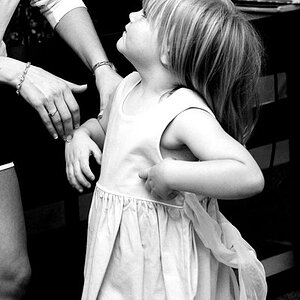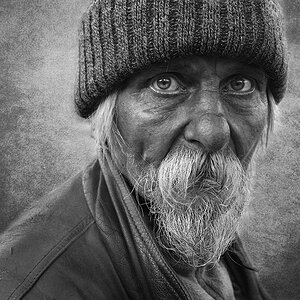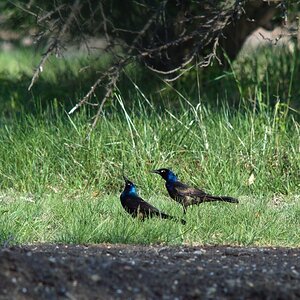gossamer
TPF Noob!
- Joined
- Dec 24, 2013
- Messages
- 234
- Reaction score
- 23
- Location
- New Jersey
- Can others edit my Photos
- Photos OK to edit
Hi, I have a Nikon D300 with a 16-85mm f3.5 (always shooting raw) and have a couple of questions about some pictures I took today. I was using the polarizer for the later part of the day, although I probably shouldn't have been.
I set the camera up for aperture-priority and 32mm focal length, and the shutter was at 1/60th, f5, with 250 ISO. The picture is bright and a bit overexposed. This was my staging shot for the scene.
I then somehow changed the focal length to 30mm, which changed the shutter speed to 1/320th, f5, still at 250 ISO. This picture is clearly underexposed.
The third picture was my best attempt at fixing it post-production with the few photoshop/camera raw skills I have.
My questions are, why would the picture be overexposed or underexposed when I was in aperture-priority? Should it automatically adjust the shutter speed to prevent this very problem from happening?
I also don't understand why the background is not blurred. The aperture was only at f5, which is typically low enough with this lens to create the blurred background effect. This may be a topic for a completely separate post, but I can't figure out why the preview button on the front of the camera doesn't perform as I expect. Every time I press it, it makes a click like it's going into aperture preview, but there's no visual difference.
Sure would appreciate any ideas you might have on the differences between these pictures!






I set the camera up for aperture-priority and 32mm focal length, and the shutter was at 1/60th, f5, with 250 ISO. The picture is bright and a bit overexposed. This was my staging shot for the scene.
I then somehow changed the focal length to 30mm, which changed the shutter speed to 1/320th, f5, still at 250 ISO. This picture is clearly underexposed.
The third picture was my best attempt at fixing it post-production with the few photoshop/camera raw skills I have.
My questions are, why would the picture be overexposed or underexposed when I was in aperture-priority? Should it automatically adjust the shutter speed to prevent this very problem from happening?
I also don't understand why the background is not blurred. The aperture was only at f5, which is typically low enough with this lens to create the blurred background effect. This may be a topic for a completely separate post, but I can't figure out why the preview button on the front of the camera doesn't perform as I expect. Every time I press it, it makes a click like it's going into aperture preview, but there's no visual difference.
Sure would appreciate any ideas you might have on the differences between these pictures!













